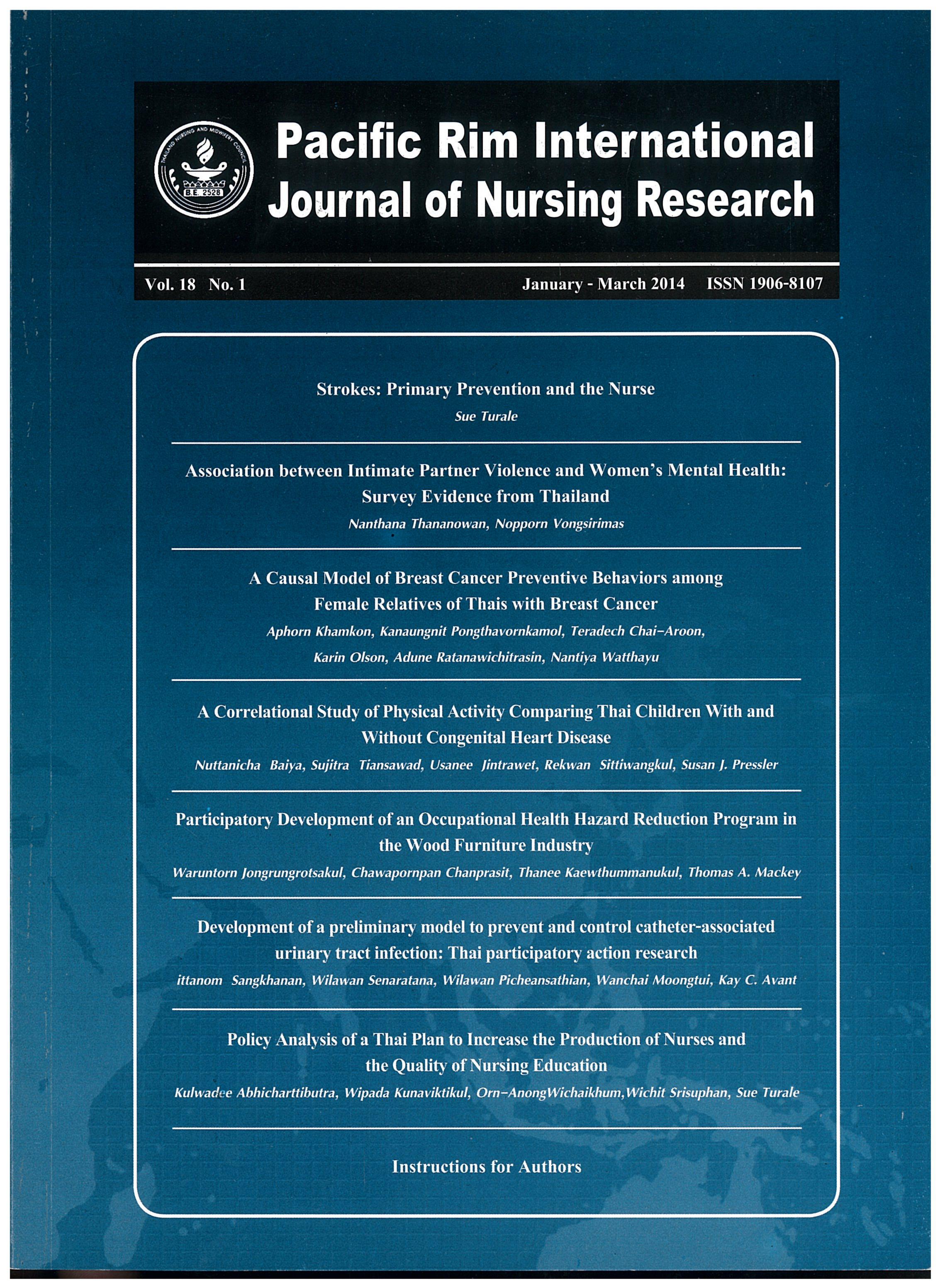Participatory Development of an Occupational Health Hazard Reduction Program in the Wood Furniture Industry
Keywords:
occupational health hazards, wood furniture industry, participatory action research, occupational health and safetyAbstract
The purpose of this participatory action research was to develop and evaluate an Occupational Health Hazards Reduction Program in the wood furniture industry. Research participants included 83 workers, the owner of a wood furniture factory, and an occupational health nurse responsible for worker health in San Kam Phaeng District in Chiang Mai Province, Northern Thailand. The study involved two main phases: 1) collaboratively developing and implementing the Program and an action plan with participants, and revising the plan until the Program was appropriate for the work context; and 2) evaluating Program implementation, by using the Workplace Hazards and Safety-based Behaviors Questionnaire. Data were analyzed using descriptive statistics and Chi-Square test. The Program, collaboratively developed by the participants and the researchers, and consisted of: 1) interactive safety training on building the capacity of lead workers to communicate the importance of using personal protective equipment; and 2) establishing and posting safety rules and regulations in work areas. An evaluation of program effectiveness was performed at weeks 8 and 16 following program implementation. Results indicated that the personal protective equipment use significantly increased from baseline (p<.01), and that a collaborative effort involving management and workers was effective in reducing risk and increasing safety-based workplace behaviors. Collaborative efforts created a sense of ‘ownership ‘and ‘partnership’ by working together. We conclude that a participatory approach can be used by occupational health nurses and health and safety workers to resolve similar or different occupational health problems in other wood factories.
Downloads
Published
How to Cite
Issue
Section
License
Copyright: The Pacific Rim International Journal of Nursing Research, Thailand Nursing & Midwifery Council has exclusive rights to publish, reproduce and distribute the manuscript and all contents therein.








.png)



